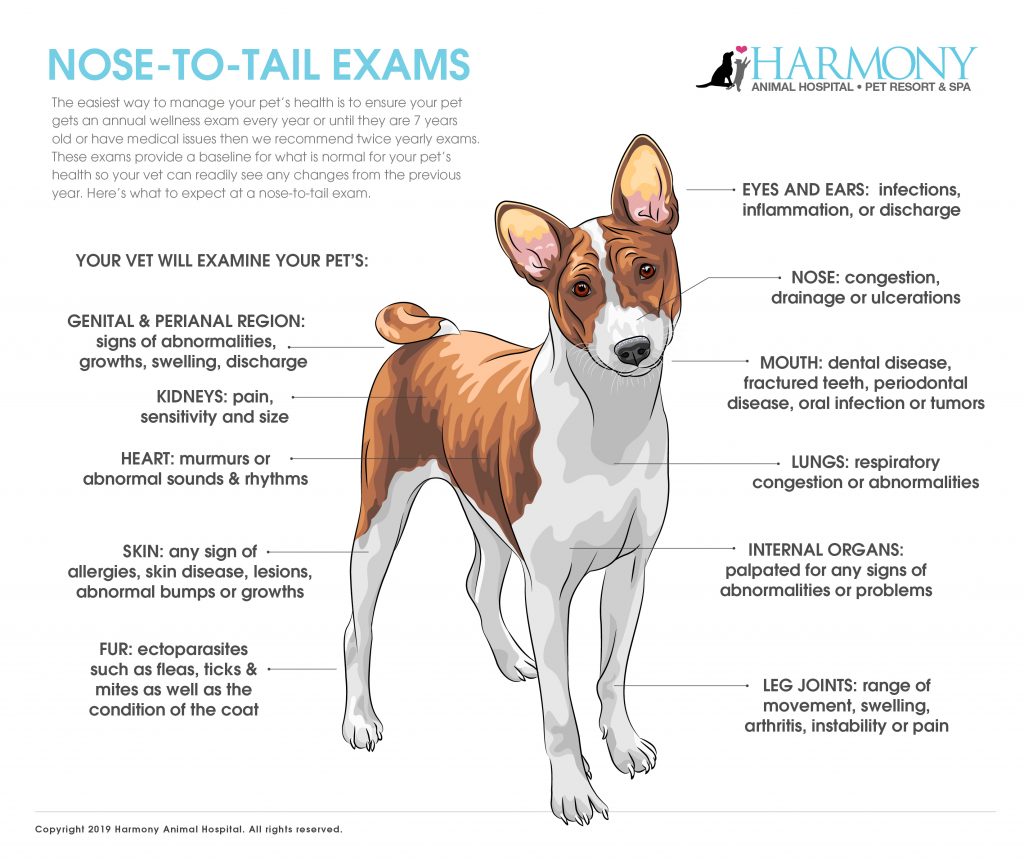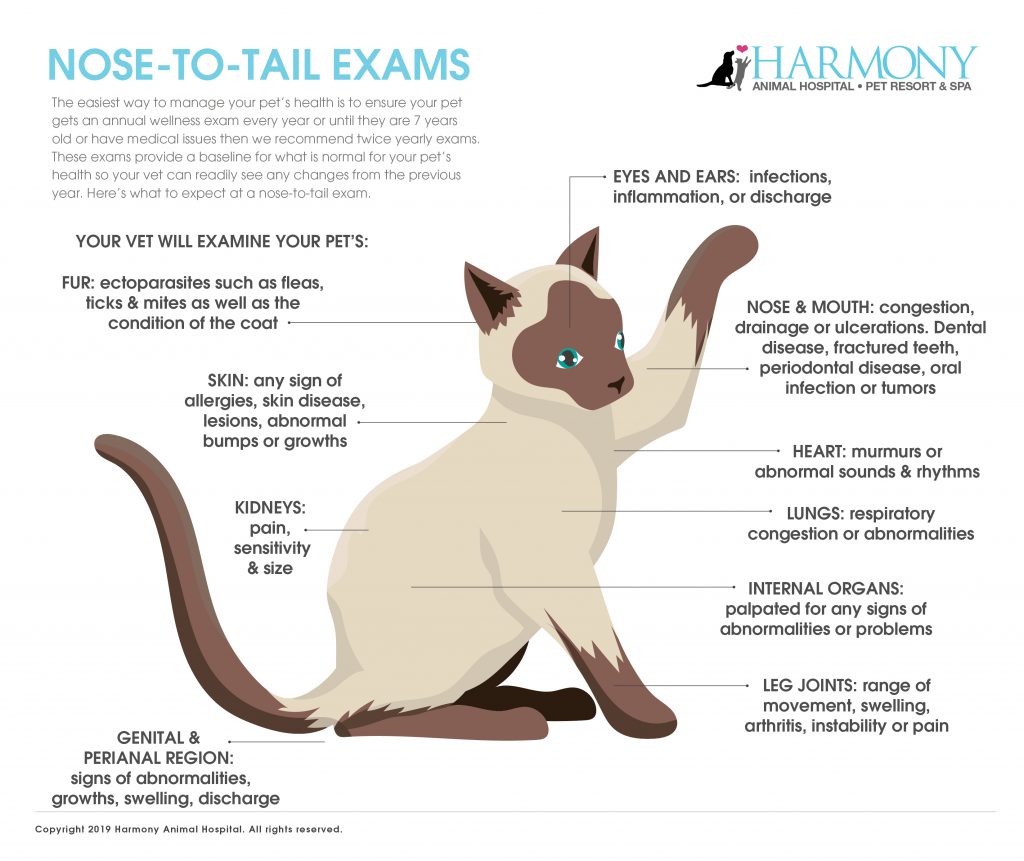Pet Checkups
While it is necessary to bring your pet in when they are sick, you shouldn’t just wait until your pet is sick before you take him to the vet. Prevention is the best way to ensure your pet lives longer and happier.
Annual and bi-annual checkups (sometimes referred to as “nose-to-tail exams”) are the best time for your vet to notice early signs of a problem that could become serious. If caught early, many serious health issues can be treated successfully with less discomfort to your pet, decreased inconvenience to you, and reduced costs. This is especially true in older pets with compromised immune systems since they are more susceptible to getting sick and to complications of some illnesses.
With dogs and cats, they age on average seven times faster than we do; therefore, seeing them even once a year would be like us going to the doctor every seven years. As a rule, the larger the breed, the quicker they age and the more likely they will have illness or issues sooner than the smaller breeds, but regardless of size or breed, all pets should have a thorough physical exam at least once a year.
What the Checkup Includes
When you come into Harmony Animal Hospital with your pet for an annual or bi-annual checkup, we will look for many things, including:
- Any signs of discharge from the nose, which could indicate something as simple as a cold or a more serious issue, such as an upper respiratory infection or even distemper.
- Any eye discharge (which could be a sign of an infection) or a dull eye appearance. Dull eyes are often a sign of illness, parasites, or even stress.
- The health of the teeth, gums, and oral cavity. Dental tartar buildup, gingivitis, and halitosis (bad breath) are all indications for recommending a more thorough oral evaluation under anesthesia (scheduled at a later date). This includes performing complete oral health and treating all oral problems, as unresolved oral disease leads to chronic pain, infection, and a compromised immune system for your pet. We will also take a look at the color of the gums. Pale gums can indicate anemia and the presence of parasites.
- Check for inflammation, infection, pain, or other abnormalities inside the ears.
- The condition of the skin: check for any lumps, cuts, or bumps on the body. Dull or patchy hair/skin can indicate your pet is sick. Crust or scabs may indicate a yeast or bacterial infection. We also check for parasites on the skin, including ticks, fleas, and lice.
- Orthopedic exam checking for signs of pain, arthritis, stiffness, joint swelling, and muscle atrophy.
- Neurologic exam checking for evidence of nerve issues or brain disease. We also check the neck, spine, and tail for pain or swelling.
- Lymph nodes that are swollen can be an indication of a more serious illness, such as infection, inflammation, or cancer.
- Auscultation of the heart and lungs to listen for evidence of heart disease and wheezes, crackles, or fluid in the lungs.
- Palpation of the abdomen to feel the internal organs for enlargement, masses, or other abnormalities.
- An overall assessment of their weight, nutrition, and lifestyle.
During the complete physical exam, if anything abnormal or unusual is detected, further tests such as ear cytology, eye testing, blood work, urinalysis, x-rays, or ultrasound might be necessary to determine if additional testing or treatment is needed.
Blood Tests
An annual dog or cat checkup might or might not include a complete blood panel. This blood test checks many internal organs, such as the health of your pet’s kidneys, liver, and pancreas. It also looks at platelets, as well as red and white blood cells, since these can point to the presence of an infection, anemia, or other problems. The test can also check blood sugar for diabetes and other body functions such as electrolytes.
Ideally, blood tests should be done every year and always prior to anesthesia to establish a baseline of normal for your pet and to check for subtle changes that can indicate an early problem way before you start seeing abnormal signs. Blood panels can also be performed only when we suspect there might be a problem or in preparation for an anesthetic procedure.
In older pets (seven years of age or older, depending on the species and the size of your pet), an annual or bi-annual blood test is always a good idea, even if your pet looks fine. Older pets are more susceptible to kidney and liver problems, diabetes, and other issues. Blood tests can help alert us of underlying problems that might not be showing symptoms yet. Even more helpful is a series of blood panels over many months or years to use as a comparison for your pet’s “normal” levels. Early detection and treatment are key to successfully treating or managing conditions that might affect your pet’s quality and quantity of life.
It’s important to keep in mind that the vet’s annual or bi-annual pet checkups are not meant to replace proper home care. That means you should get used to touching, examining, and monitoring your pet regularly to check for any changes in their routines or their body. If you notice any abnormality or any signs of discomfort or pain, don’t wait until the next checkup to bring it up; schedule an appointment right away.




